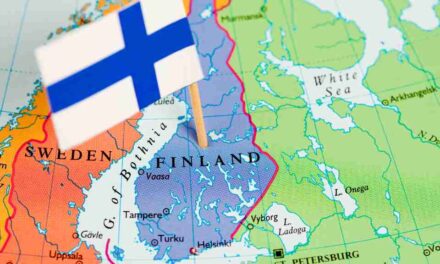genetic origin of the Finnish people?
The Finnish people, with their unique language, culture, and traditions, have a distinct identity within the Scandinavian region. Understanding the genetic origin of a population can shed light on its historical migrations and interactions. In this article, we will explore the genetic origin of the Finnish people, delving into their ancestry, genetic markers, and connections to neighboring populations.
- Ancestral Origins:
The genetic origins of the Finnish people can be traced back to the ancient migrations of various populations in Northern Europe. Finns belong to the Uralic language group, which also includes the Estonians, Hungarians, and several indigenous groups in Siberia. Linguistic and archaeological evidence suggests that the ancestors of the Finns migrated from the east, likely originating from the Ural Mountains region.
- Haplogroups and Genetic Markers:
Genetic studies have revealed specific haplogroups and genetic markers that are prevalent among the Finnish population. Haplogroups are groups of individuals who share a common ancestor on the maternal (mitochondrial DNA) or paternal (Y-chromosome) lineages. In Finland, the most common mitochondrial haplogroup is H, while the Y-chromosomal haplogroup N1c is found at high frequencies. These genetic markers indicate connections to both Eastern European and Siberian populations.
- Genetic Isolation:
The Finnish population has experienced a level of genetic isolation due to historical factors such as geographical location and limited interactions with neighboring populations. Finland’s northern location and its vast forests and lakes created barriers to population movement and limited gene flow. This isolation, coupled with unique cultural practices, contributed to the distinctiveness of the Finnish genetic makeup.
- Eastern Influences:
The genetic origin of the Finnish people reflects historical interactions with neighboring populations. Eastern influences can be observed in the Finnish gene pool, particularly from Eastern Europe and Siberia. The high prevalence of the N1c Y-chromosomal haplogroup, found among the Finns and other Uralic-speaking populations, suggests a connection to ancient Siberian populations and possibly Finno-Ugric migrations.
- Swedish and Scandinavian Influences:
The Finnish genetic profile also reveals influences from neighboring Scandinavian populations, particularly from Sweden. The historical ties between Finland and Sweden, including periods of Swedish rule, have contributed to genetic exchanges and shared ancestry between the Finnish and Swedish populations. Genetic studies indicate a significant Scandinavian genetic component among the Finnish people.
- Genetic Variations within Finland:
It is important to note that genetic variations exist within the Finnish population itself. Finland’s geography, with its diverse regions of coastline, archipelagos, and inland areas, has influenced local genetic patterns. In addition, historical events, such as the settlement of Karelian refugees during World War II, have introduced genetic diversity and regional variations within Finland.
- Recent Genetic Studies:
Advancements in genetic research, such as genome-wide studies, have provided further insights into the genetic origin of the Finnish people. These studies have highlighted the complex genetic history of Finland, indicating ancient genetic connections to both Eastern and Western populations. The genetic diversity within Finland has also been shown to have regional patterns, reflecting historical migrations and population movements.
- Genetic Continuity and Identity:
Despite various influences and migrations throughout history, the Finnish population has maintained a sense of genetic continuity and a distinct identity. The combination of ancestral origins, unique linguistic heritage, and cultural practices has contributed to the preservation of the Finnish genetic heritage and the strong sense of Finnish identity.
Genetic origin of the Finnish people – Conclusion












